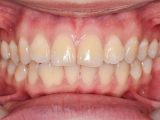
Proper Oral Habits: What Do Healthy Teeth and Gums Look Like?
2020-10-05Contents
Healthy teeth and gums are essential to oral health, the window to your overall health. The problems in your mouth can affect the rest of your body. Protecting your oral hygiene also means taking care of your overall health. You can visit their website cpdental.com.au for more information on how to have healthy teeth and gums.
What is a healthy mouth?
A healthy mouth has a significant role in your overall health. It should have consisted of healthy teeth and gums. Teeth without any dark or damaged areas and gums that pink and firm. Since your mouth is the entry point to your digestive and respiratory tracts, bacteria can quickly form in your teeth and gums that can cause disease.
Daily brushing and flossing are the usual natural defenses of the body and good oral health care to keep the bacteria under control. But, with poor oral hygiene, it can result in tooth decay and gum disease, the common ailments caused by oral infection.
Moreover, particular medication can reduce saliva flow. These medications can be antihistamines, decongestants, diuretics, painkillers, and antidepressants. Saliva helps to protect you from bacteria that multiply and lead to disease by washing away food and neutralizes acids created by microbes in the mouth.
Researches stated that oral bacteria and the inflammation related to an extreme type of gum disease, particularly periodontitis, may assume a part in certain conditions such as diabetes and AIDS. In these forms of ailments, it can bring down the resistance of the body to infection, making oral health problems more serious.
What conditions can be connected to oral health?
Oral health can contribute to different diseases and conditions, including:
Cardiovascular disease. Some studies suggest that inflammation and infection caused by oral bacteria can be linked with some illnesses such as heart disease, stroke and clogged arteries.
Endocarditis. When microbes or other germs from your mouth spread through your circulatory system and attach to specific parts in your heart, it may result in an infection of the inner lining of your heart chambers or valves.
Pregnancy and birth complications. Gum disease has been connected to low birth weight and premature birth.
Pneumonia. When certain bacteria in your mouth drag down into your lungs, it can cause pneumonia and other respiratory diseases.
The following conditions can also affect your oral health:

Diabetes. By decreasing the resistance of the body to infection, diabetes puts your gums in danger. Gum disease gives off the impression of being more and serious among individuals who have diabetes. Study shows that individuals who have gum diseases have a more challenging time controlling their glucose levels. Consistent periodontal care can improve diabetes control.
AIDS. People who have AIDS are usually prone to oral issues such as painful mucosal lesions.
Osteoporosis. This kind of bone-weakening disease is associated with tooth loss and periodontal bone loss. Some medications utilized to cure osteoporosis convey a slight threat of damage to the bones of the jaw.
Alzheimer’s disease. As Alzheimer’s disease progresses, worsening oral health can be seen. Scientists have recently discovered that these types of microbes, referred as Porphyromonas gingivalis, can travel from the mouth to the brain. When the bacteria comes in the head, the microbes discharge enzymes called gingipains that can destroy nerve cells, which in turn can lead to cognitive decline and eventually Alzheimer’s.
Different conditions that may connect to oral health include rheumatoid arthritis, eating disorders, certain cancers and an immune system disorder that causes dry mouth.
Inform your dental specialist about the prescriptions you take and about changes in your overall health, mainly if you have lately been sick or you have an ongoing condition, such as diabetes.
If you’re playing contact sports, you might risk your teeth with injuries that’s why it’s ideal to wear mouthguards in these situations.
Different kinds of dental and oral diseases
Since we use our teeth and mouth for a lot of time, it is not surprising how many things can go wrong over time if you do not take proper care of your teeth. You will probably experience at least one of the following common dental problem.
Cavities
Cavities, or also called tooth decay, is a prevalent dental problem. Cavities are areas of the tooth that have been permanently damaged. These are the tooth that may even have dark holes in them. Cavities happen when food, bacteria, and acid cover your teeth and create a plaque.
The acid on your teeth begins to eat away at the enamel and afterwards the fundamental dentin, or connective tissue. After some time, this can prompt permanent damage.
Gum disease
Gum disease, referred to gingivitis, is inflammation and swelling of the gums. This type of gum disease typically the consequence of plaque developing on your teeth due to inadequate flossing and brushing habits. In gingivitis, your gums can swell and bleed when you floss or brush. More serious infection like periodontitis can occur when gingivitis is left untreated.
Periodontitis
The infection can spread to your bones and jaw as periodontitis progresses. This type of severe gum disease can also cause an inflammatory reaction all through the body.
Broken or cracked teeth
A cracked or broken tooth can be very painful. The physical issue to the mouth, biting hard foods, or grinding the teeth around evening time can crack or break your tooth. It is advisable to go to your dentist right away when you have broken or cracked a tooth.
Sensitive teeth
If you have sensitive teeth, you might feel discomfort or pain after having hot or cold foods or drinks. Tooth sensitivity is also called “dentin hypersensitivity.” It sometimes happens temporarily after having a filling or a root canal. It can also be the consequence of a cracked tooth, gum disease, receding gums, and worn-down fillings or crowns.
A few people usually have delicate teeth since they have finer enamel. Most often, changing your oral hygiene regimen can be a treatment to naturally sensitive teeth. There are explicit brands of mouthwash and toothpaste for individuals with sensitive teeth.
Oral cancer
Oral cancers include cancer of the gums, lips, tongue, cheek, the floor of the mouth and hard and soft sense of taste.
A dental specialist is usually the first person to perceive oral malignancy. The most significant risk factor for oral cancer is smoking and chewing tobacco.
How can I protect my oral health?
As mentioned earlier, protecting your oral health has a strong effect on your overall health. So, take time to learn more about proper oral hygiene. Good oral hygiene like flossing and brushing at least twice a day can help forestall cavities, tooth loss and gum disease. It is also essential to clean and check your teeth by a dentist or dental hygienist at least once a year. You can check a local dentist near you by searching online to help you find the most trusted with good reviews. Regardless of how well you brush, plaque and tartar can still develop and cause gum problems.
To brush properly



Brush your teeth gently by using short strokes. Brush each tooth for 15 to 20 times. Remember not to scrub your te
eth and gums. Brush the external tooth surfaces using short, back-and-forth strokes. The inner upper-front teeth, brush them vertically using short, downward strokes. While on the internal lower front teeth, use short, upward strokes. Lastly, on the chewing surface, brush them with short, back-and-forth strokes.
Moreover, it is essential to replace your toothbrush every three to four months. Get a new toothbrush also after you have strep throat, cold, or similar illness. Try not to cover your toothbrush or store it in a closed container. This can enhance the development of microorganisms.
Floss with care
Flossing assists with eliminating plaque and food particles that are stuck between your teeth and under your gums. To floss accurately:
Cut off about 18 inches of floss and hold it firmly between your thumbs and index fingers. Put it between your teeth and lightly slide it all over.
When the floss comes to the gum line, bend it around one tooth.
Slightly rub the side of the tooth, moving the floss with up-and-down movements, making sure to go underneath the gum line. Do it again the technique on the rest of your teeth, and make sure to floss the posterior of your back teeth.
Watch what you eat
The nourishment you eat adds to tooth decay when they consolidate with bacteria in your mouth. To secure your teeth:
Have a lot of calcium-rich nutrients like yogurt, milk, and cheese. It is essential for older adults and kids during the development of both child and grown-up teeth.
Try not to eat sticky sweets like toffees, soft candies, and pastries. Wash your mouth with water if you eat sweets. You can also brush your teeth if you have a chance. It is advisable to chew sugar-free brands if you want to chew gum.

